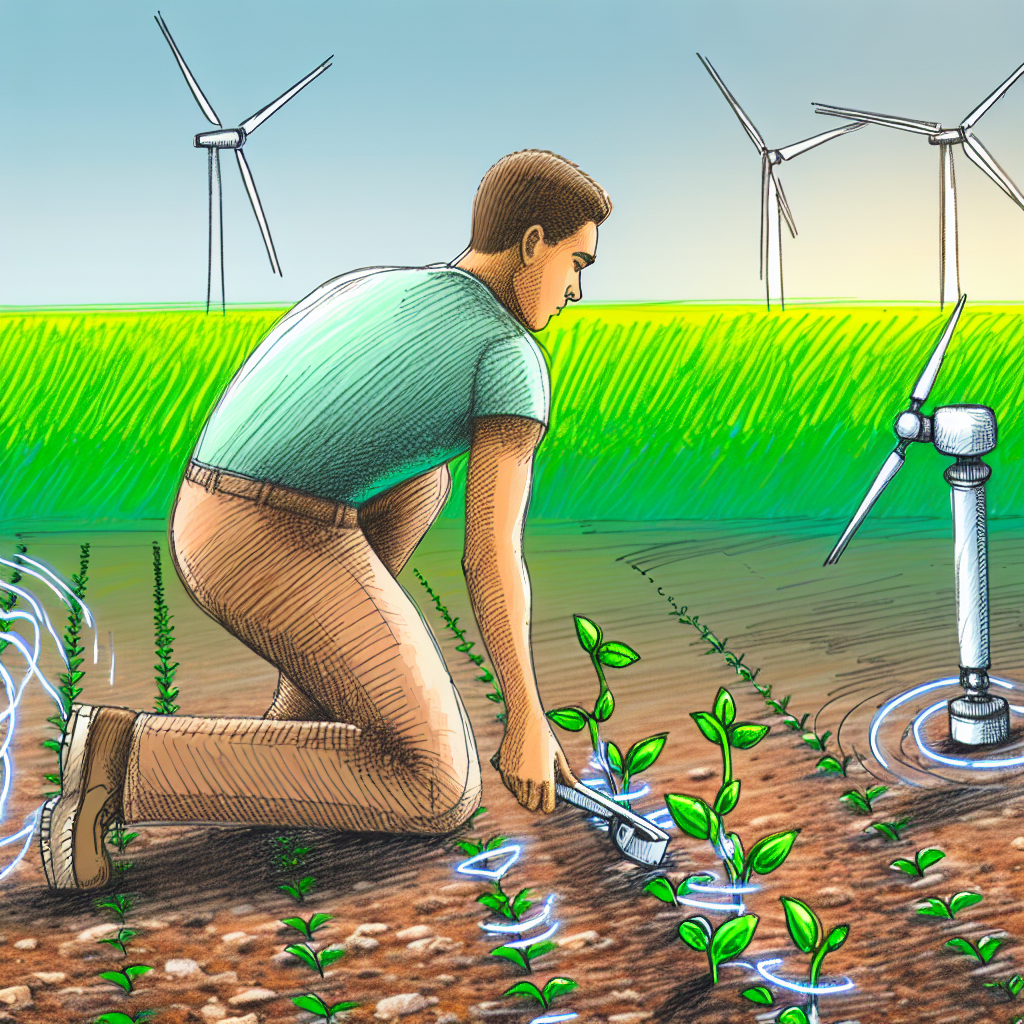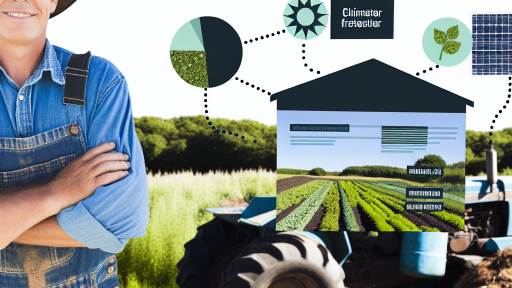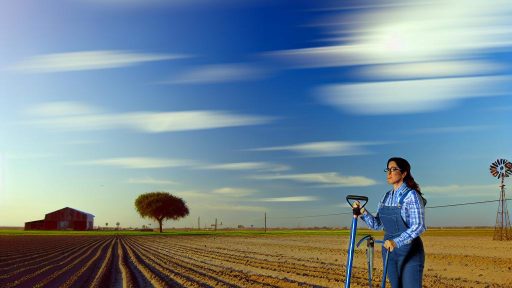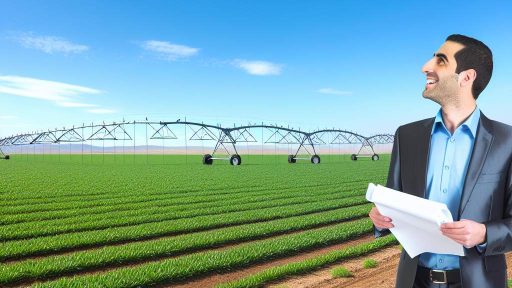Introduction to Climate Change and Its Impact on Agriculture
Climate change presents significant challenges to agriculture worldwide.
It alters weather patterns, affecting crop growth and yield.
Increased temperatures lead to heat stress in plants and animals.
Moreover, altered rainfall patterns cause droughts and floods.
Farmers must adapt to these unpredictable conditions.
This adaptation requires innovative practices and strategies.
Effect on Crop Production
Crops face a higher risk of diseases due to climate change.
Extreme weather events can severely damage crops.
Unexpected frosts can destroy young plants in the spring.
Additionally, pests thrive in warmer climates, posing risks.
Farmers must monitor pest populations closely to mitigate damage.
Impact on Livestock
Livestock health is also affected by climate change.
Higher temperatures can lead to heat stress in animals.
This stress reduces milk production and reproductive rates.
Access to water becomes increasingly crucial for livestock welfare.
Transform Your Agribusiness
Unlock your farm's potential with expert advice tailored to your needs. Get actionable steps that drive real results.
Get StartedFarmers must implement cooling and hydration strategies for animals.
Economic Consequences
The financial implications of climate change are substantial.
Crop failures directly impact farmers’ incomes and livelihoods.
Increased costs, such as irrigation systems, become necessary investments.
Insurance premiums for crops may also rise due to unpredictability.
Farmers face financial pressure as climate change intensifies.
Adaptation Strategies
Farmers employ various strategies to combat climate change effects.
They adopt sustainable practices, including crop rotation and cover cropping.
These methods enhance soil health and minimize erosion.
Additionally, advanced technologies improve farming efficiency.
For instance, precision agriculture optimizes resource use.
Understanding Soil Health
The Importance of Soil Health
Soil health is vital for sustainable agriculture.
It supports crop growth and enhances food security.
Healthy soils also absorb carbon, mitigating climate change.
Practices for Enhanced Resilience
Farmers can adopt various techniques to improve soil health.
Crop rotation enhances biodiversity and nutrient availability.
Cover crops prevent erosion and improve soil structure.
Organic amendments like compost enrich the soil.
Soil Conservation Methods
Conservation tillage minimizes disturbance to the soil.
This practice helps maintain soil structure and moisture.
Integrating contour farming reduces runoff and soil loss.
Utilizing Native Plants
Native plants promote local biodiversity and resilience.
They require less water and fewer inputs than traditional crops.
Soil Monitoring and Testing
Regular soil testing helps farmers understand nutrient needs.
Showcase Your Farming Business
Publish your professional farming services profile on our blog for a one-time fee of $200 and reach a dedicated audience of farmers and agribusiness owners.
Publish Your ProfileMonitoring pH levels and organic matter enhances fertility.
This data allows for informed decisions on amendments.
Community Involvement
Farmers can collaborate with local extension services.
Sharing knowledge fosters innovation in soil management practices.
Community workshops educate on sustainable techniques.
Water Management Techniques for Drought and Flood Prevention
Implementing Efficient Irrigation Systems
Farmers increasingly adopt drip irrigation to conserve water.
This method delivers water directly to plant roots.
Consequently, plants receive the necessary moisture without excess usage.
New technologies monitor soil moisture levels effectively.
As a result, farmers can adjust irrigation schedules accordingly.
Utilizing Rainwater Harvesting
Many farmers now collect rainwater for irrigation purposes.
This practice reduces reliance on groundwater supplies.
Storage systems can include barrels or larger storage tanks.
Thus, farmers can use harvested water during dry spells.
This not only aids in drought prevention but also promotes sustainability.
Practicing Crop Rotation and Cover Cropping
Diverse planting strategies can improve soil health significantly.
Crop rotation prevents nutrient depletion and reduces pest issues.
Furthermore, cover crops improve soil structure and water retention.
By doing this, farmers enhance the resilience of their land.
This method mitigates both drought and flooding risks effectively.
Developing Contour Farming Techniques
Farmers implement contour farming to combat soil erosion.
This technique follows the natural contour lines of the land.
As a result, it slows water runoff and conserves moisture.
Additionally, this practice helps maintain soil integrity during heavy rains.
Overall, contour farming supports sustainable land use and water management.
Creating Wetlands and Buffer Zones
Establishing wetlands can absorb excess rainwater efficiently.
These areas act as natural sponges during heavy rainfall.
Similarly, buffer zones along waterways filter pollutants.
They also protect against soil erosion and improve water quality.
Thus, wetlands and buffer zones are vital for comprehensive water management.
Explore Further: Managing Excess Water: Tools and Techniques for Farmers
Crop Diversity: Importance of Traditional and Native Species
Enhancing Resilience to Climate Change
Crop diversity is critical for enhancing resilience against climate change effects.
Farmers can adapt to unpredictable weather patterns through diverse planting practices.
Traditional and native species often exhibit inherent resistance to local pests and diseases.
As a result, these crops can thrive with less chemical intervention.
Promoting Soil Health
Diverse crops improve soil health by reducing erosion and promoting nutrient cycling.
Cover crops, for instance, can enhance soil structure and prevent nutrient depletion.
Moreover, deeper-rooted plants can access nutrients unavailable to shallow-rooted species.
Boosting Local Economies
Integrating native crops into farming systems can boost local economies.
Farmers can tap into niche markets by cultivating unique, culturally significant crops.
Showcase Your Farming Business
Publish your professional farming services profile on our blog for a one-time fee of $200 and reach a dedicated audience of farmers and agribusiness owners.
Publish Your ProfileThese markets often yield higher prices than conventional crops.
Strengthening Food Security
Crop diversity strengthens food security by ensuring a stable food supply.
Growing a variety of crops reduces the risk of total crop failure.
Thus, farmers can provide more options for local communities.
Preserving Cultural Heritage
Traditionally grown crops carry cultural significance for many communities.
Each crop tells a story of local customs and agricultural history.
Preserving these species helps maintain cultural identities and traditions.
Encouraging Sustainable Practices
Cultivating diverse crops encourages sustainable agricultural practices.
This includes crop rotation and intercropping, which protect against soil depletion.
Farmers can also improve biodiversity by designating areas for native flora.
Importance of Crop Diversity for Future Food Systems
Incorporating traditional and native crops remains crucial for future food systems.
Farmers can tackle climate change challenges effectively by prioritizing crop diversity.
Uncover the Details: Innovative Drainage Solutions for Modern Agriculture
Agroforestry: Integrating Trees into Farming Systems
Overview of Agroforestry
Agroforestry combines agriculture with forestry practices.
This method enhances biodiversity and sustainability.
Farmers can improve soil health through tree integration.
Moreover, agroforestry can economically benefit rural communities.
Benefits of Agroforestry
Agroforestry offers numerous environmental advantages.
It supports carbon sequestration, thereby combating climate change.
Additionally, trees provide shade and shelter for crops.
Such conditions promote healthier plants and higher yields.
Furthermore, agroforestry can reduce soil erosion significantly.
Different Types of Agroforestry Systems
Several agroforestry systems exist worldwide.
For instance, alley cropping involves planting crops between trees.
This method optimizes land use and improves soil quality.
Another approach is silvopasture, integrating trees with livestock.
This practice enhances animal welfare and productivity.
Additionally, windbreaks help protect crops from harsh winds.
These trees create microclimates that improve crop health.
Implementation of Agroforestry
Farmers can start implementing agroforestry practices progressively.
First, they should assess their land and resources.
Next, selecting suitable tree species is crucial.
Consulting with local agricultural experts can provide valuable insights.
Moreover, participating in community workshops is beneficial.
These workshops educate farmers on best practices and methods.
Case Studies
Numerous successful agroforestry initiatives exist globally.
In Brazil, farmers successfully integrated coffee farming with native trees.
This approach boosted coffee yields while enhancing biodiversity.
In the U.S., agroforestry practices improved soil health in several regions.
Farmers reported increased resilience against extreme weather conditions.
Showcase Your Farming Business
Publish your professional farming services profile on our blog for a one-time fee of $200 and reach a dedicated audience of farmers and agribusiness owners.
Publish Your ProfileChallenges of Agroforestry
While agroforestry has benefits, challenges remain.
Initial setup requires investment and time commitment.
Additionally, farmers may face learning curves in new practices.
Moreover, market access for agroforestry products can be limited.
Strategic planning and community support can mitigate these obstacles.
Learn More: Mitigating Greenhouse Gases through Smart Agriculture

Sustainable Pest Management: Reducing Chemical Reliance
Overview of Current Practices
Farmers face numerous pest challenges each season.
Conventional methods often involve heavy chemical use.
This reliance on chemicals poses risks to health and the environment.
Thus, many farmers seek alternative solutions.
Integrated Pest Management (IPM)
Integrated Pest Management, or IPM, offers a comprehensive approach.
It combines biological control, habitat manipulation, and resistant varieties.
Farmers analyze pest populations and environmental conditions.
This assessment informs timely and targeted interventions.
IPM reduces the need for chemical pesticides significantly.
Biological Control Methods
Biological control involves using natural predators to manage pests.
Farmers can introduce ladybugs to regulate aphid populations.
Other beneficial insects like parasitoid wasps may also be deployed.
These methods integrate smoothly into existing ecosystems.
Use of Pesticide Alternatives
Farmers are turning to organic pesticides made from natural substances.
Neem oil and diatomaceous earth are popular choices.
These alternatives typically have lower toxicity levels.
They also tend to break down more quickly in the environment.
Crop Rotation and Diversity
Crop rotation helps disrupt pest life cycles.
Diverse planting strategies increase resilience against pests.
Farmers rotate crops to confuse pests and reduce infestations.
This strategy enhances soil health, leading to better crop yields.
Education and Community Involvement
Farmers benefit from workshops and community programs.
These events provide valuable information on sustainable practices.
Networking with peers fosters sharing of successful strategies.
Local agriculture extension services also play a key role.
Partnerships with Researchers
Collaborating with agricultural scientists enhances pest management techniques.
Farmers gain access to the latest research and innovative solutions.
This partnership expands knowledge and improves practices across regions.
Evaluating Success
Farmers must regularly assess the effectiveness of their methods.
Monitoring pest populations helps determine the most effective strategies.
Adjustments can be made to optimize pest management approaches.
Ultimately, sustainable practices lead to healthier crops and ecosystems.
Find Out More: Adaptation Tactics for Sustainable Agriculture Practices
Innovative Technologies: Drones and Data for Precision Farming
The Role of Drones in Agriculture
Drones are revolutionizing agriculture through innovative applications.
Showcase Your Farming Business
Publish your professional farming services profile on our blog for a one-time fee of $200 and reach a dedicated audience of farmers and agribusiness owners.
Publish Your ProfileFarmers utilize drones for crop monitoring and assessment.
These aerial vehicles capture detailed images of fields.
This imagery offers insights into crop health and growth patterns.
As a result, farmers can make informed decisions regarding interventions.
Data Collection and Analysis
Data plays a crucial role in precision farming.
Farmers gather data on soil conditions and moisture levels.
This information helps optimize resource allocation and usage.
Applied analytics allow farmers to predict yields more accurately.
Advanced software tools facilitate data analysis and interpretation.
Benefits of Precision Farming
Precision farming leads to increased efficiency and productivity.
Farmers experience reduced waste in water and fertilizers.
This sustainable approach supports environmental conservation efforts.
Moreover, it enables higher crop yields with lower input costs.
Farmers can respond quickly to emerging challenges such as pests or diseases.
Leading Companies in the Sector
Several companies are at the forefront of drone technology in farming.
Planet Labs focuses on satellite imagery and drone data integration.
DJI offers a range of drones specifically designed for agricultural use.
PrecisionHawk provides advanced analytics solutions for farmers.
These companies help drive innovation in sustainable agriculture.
Community Engagement and Farmer Cooperatives for Climate Resilience
Importance of Community Engagement
Community engagement plays a vital role in addressing climate change impacts.
Farmers benefit from shared knowledge and diverse experiences through local networks.
This collaboration fosters innovative solutions tailored to specific community needs.
Involving the community encourages sustainable practices and resource management.
Strong community ties lead to enhanced resilience against climate fluctuations.
Role of Farmer Cooperatives
Farmer cooperatives serve as essential platforms for collective action.
They allow farmers to pool resources for shared agricultural practices and equipment.
This collaboration increases efficiency and reduces costs for individual farmers.
Cooperatives also provide a unified voice in advocating for policy changes.
Furthermore, they can access and share valuable information about climate adaptation strategies.
Successful Initiatives and Case Studies
Initiatives by cooperatives showcase the power of collective effort.
For example, the Green Valley Cooperative created a community garden project.
This project involved local schools and families, promoting sustainable gardening techniques.
Similarly, the Rural Resilience Network connected farmers with climate experts.
This collaboration resulted in training sessions focused on sustainable practices.
Challenges and Solutions
Despite their benefits, cooperatives face challenges in engagement and funding.
Lack of resources can hinder farmers from participating in cooperative activities.
To overcome this, cooperatives can seek grants and partnerships with local organizations.
Moreover, effective communication can enhance participation from all community members.
Encouraging diverse membership can enrich cooperative solutions to climate challenges.
Future Directions
Looking ahead, increasing community engagement remains crucial for resilience.
Showcase Your Farming Business
Publish your professional farming services profile on our blog for a one-time fee of $200 and reach a dedicated audience of farmers and agribusiness owners.
Publish Your ProfileCooperatives should embrace digital tools to enhance collaboration and outreach.
Furthermore, promoting education on climate issues builds a more informed community.
By prioritizing inclusivity, cooperatives can strengthen their impact over time.
Additional Resources
Natural Climate Solutions: How nature can fight climate change




